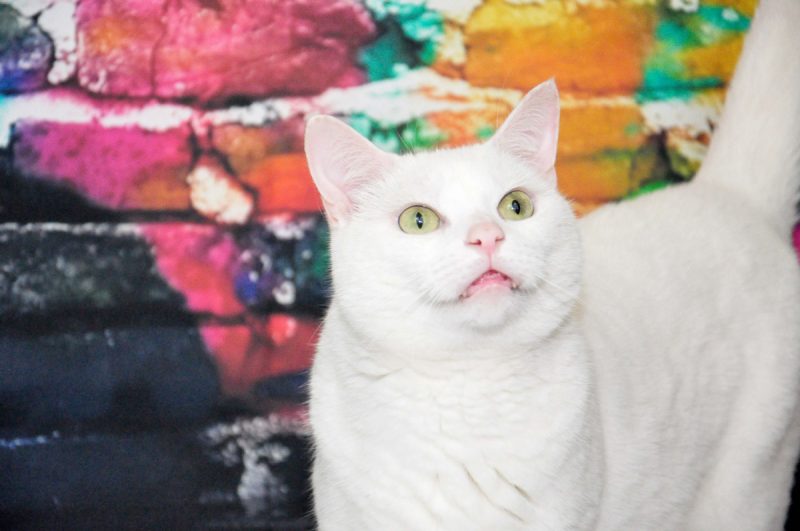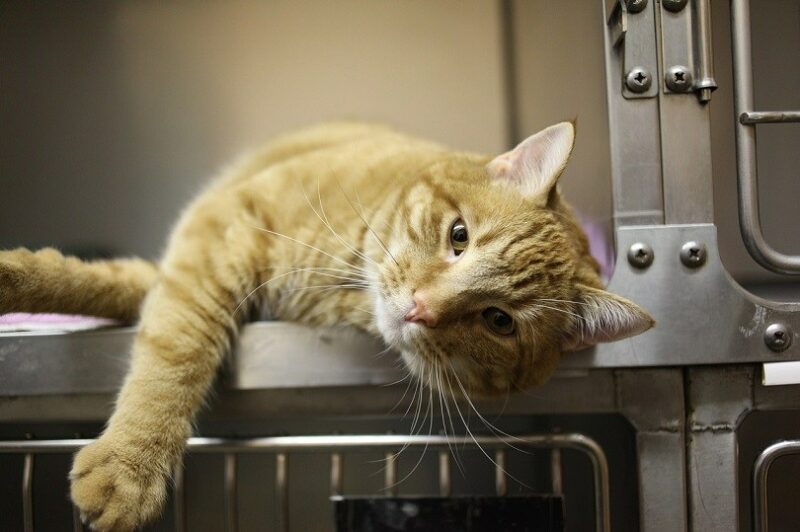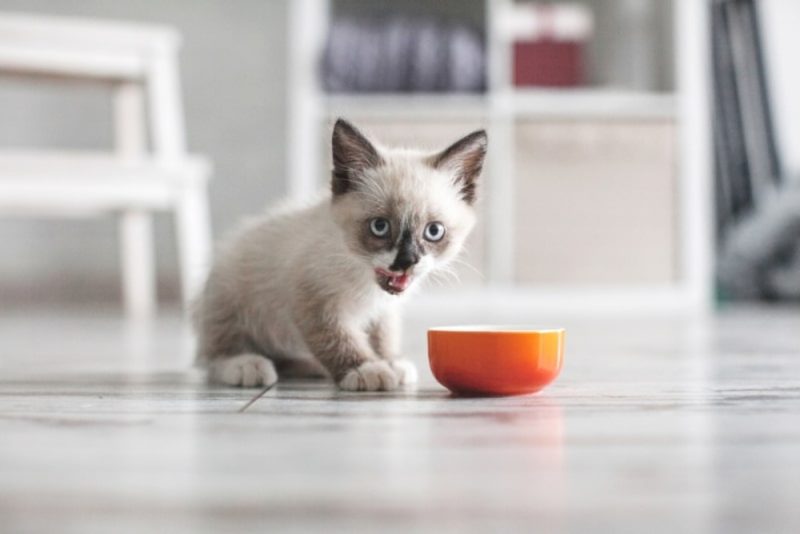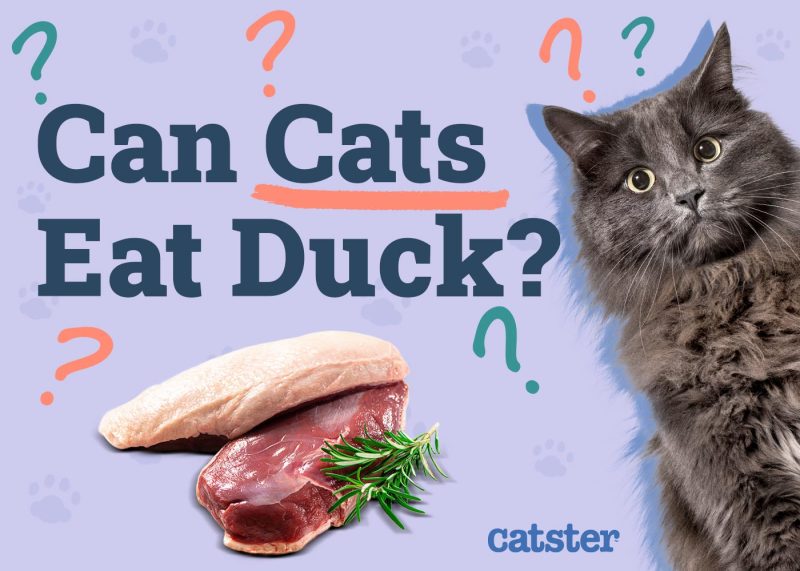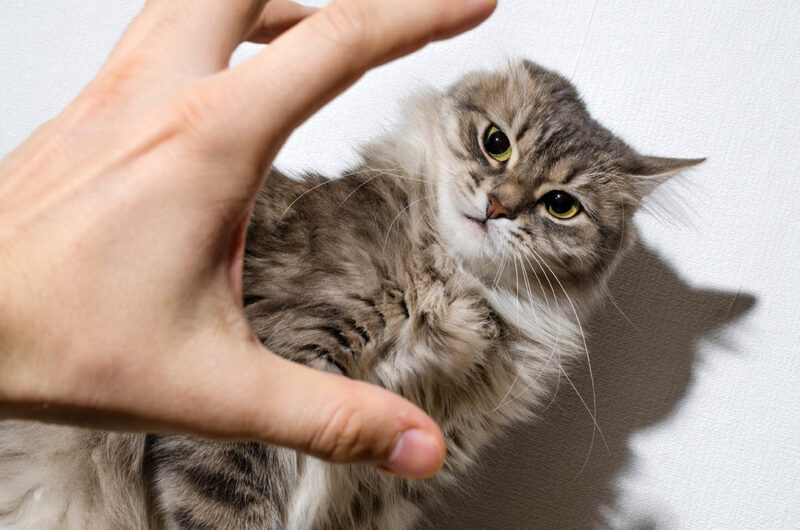Most people will say that cats are untrainable, but the reality is that they can be trained if you take the right approach. Clicker training can be highly effective with young cats and kittens, giving you the tools to teach basic behaviors or even advanced tricks.
Learn how to clicker train your cat with a simple clicker, a handful of treats, and lots of practice!

Before You Start: Get Supplies to Train Your Cat
- A clicker tool or a clicker training app on your phone
- Healthy cat treats
- A lot of patience
A clicker is a small plastic box that you hold in your hand. It has a metal tongue that you can press quickly to make a clicking sound. Some cats don’t like how loud clickers are, but you can find soft clickers are less likely to be startling.


Step-by-Step Guide to Clicker Train a Cat
1. Introduce the Clicker
The first step with clicker training is building an association between the sound of the click and your cat getting a treat. The key is to deliver the treat immediately after clicking. Use high-value treats like tuna bits or cooked chicken diced into cubes. Eventually, you can work with regular treats.
It takes a lot of consistency and repetition to build this association, but it works if you stick with it. Your cat will learn that the click means a treat is coming, which is when you can use this method to train basic behaviors.
2. Start Behavior Training
Let’s begin with a simple command like “sit.”
Approach your cat with the clicker in one hand and a treat in the other. Hold the treat up to your cat’s nose. As your cat begins to sniff, move the treat from their nose to just between their ears. Since they will follow with their eyes and nose, they will naturally sit.
The second your cat’s rear hits the floor, click and offer a treat. It’s crucial that you get the timing just right to build the association between sitting and getting a reward. Practice several times until it becomes reliable. Similar commands can be taught using the same methods, such as target touching, “stay”, or fetch.

3. Teach Appropriate Behavior
Along with training the basic commands, you can use clicker training to reduce negative behaviors. The key isn’t punishing the bad behavior but redirecting it to something you want the cat to do.
For example, if you wanted to teach your cat not to scratch your couch, it takes not only making the couch an unpleasant thing to scratch but also shifting the impulse to something your cat can scratch, such as a scratching post.
Simple tricks can work to deter the behavior, such as double-sided sticky tape on your couch. Then, ensure that you offer your cat an alternative scratching area to use instead. When your cat scratches the scratching post or mat, use a click and treat as a reward.
4. Don’t Do Too Much Too Fast
A cat that isn’t responding to training may simply not understand what you’re expecting from them. Trying to accomplish too much at once, especially in an older cat or a cat that has some negative associations, is a recipe for setbacks.
Make the rewards enticing and easily accessible to build up to more complex behaviors. Ensure that you only train one new behavior at a time and that each is trained in small steps so the cat can realistically progress from the basis. For example, if you wish to teach your cat to pass through a tunnel, be sure the cat is confident outside and around the tunnel before you expect them to cross it. Let them build their confidence, and reinforce every small progress with the treat.
The first treat should come when they look inside the tunnel; the clicker is used to mark that exact moment. When they put their head in, use the clicker again, followed by a treat to let the cat know that that’s right. The third click plus treat will be achieved for entering the tunnel until at least the base of the neck, the fourth for stepping one paw in, and so on. This should be achieved in several sessions to enable the cat to end each on a positive note.
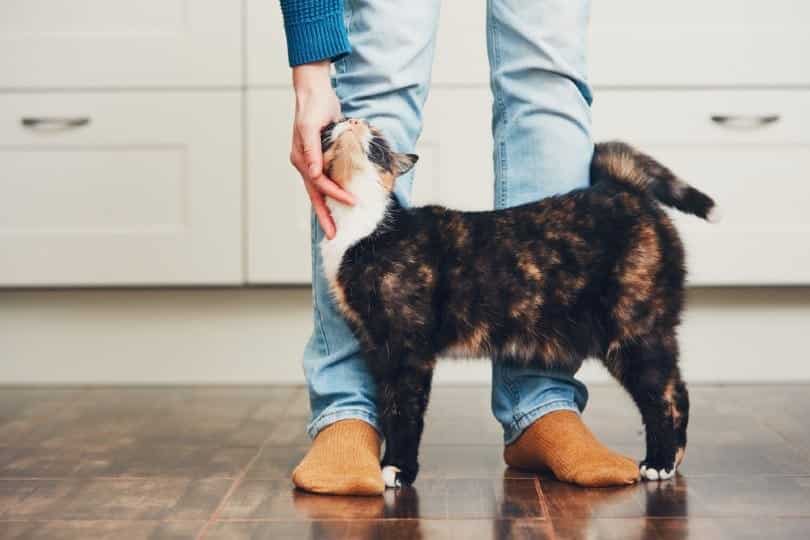

Conclusion
No matter your cat’s age or breed, you can train them to learn basic commands and tricks with clicker training. It’s also a great option to reduce unwanted behaviors in a positive way and alleviate any fears or stress your cat had in the past with punishment. Whatever your goals, regular training sessions, a clear plan with small achievable steps, and consistency are the secret formulas for success.
Featured Image Credit: Andriy Blokhin, Shutterstock




